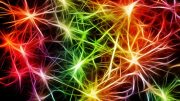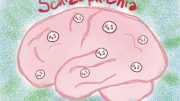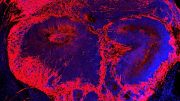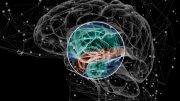
Brains of people at risk of psychosis exhibit a pattern that can help predict whether they will go on to develop full-fledged schizophrenia, a new Yale-led study shows.
Brains of people at risk of psychosis exhibit a pattern that can help predict whether they will go on to develop full-fledged schizophrenia, a new Yale-led study shows. The findings could help doctors begin early intervention therapies for those most likely to develop the disabling disorder.
Using fMRI images of people who exhibit features indicating a high risk for psychosis, the Yale team noted increased functional connectivity in the cerebello-thalamo-cortical circuitry, an extensive network involved in the coordination of a host of brain functions, they report September 21 in the journal Nature Communications. Higher degrees of functional connectivity of this network were found in those who later developed psychosis.
In a second experiment, they confirmed this hyperconnectivity pattern was present among those who already have a diagnosis of schizophrenia but not in those with other psychiatric disorders.
“The hope is that this biomarker can be used in second-stage screening after the identification of other risk factors for schizophrenia,” said Tyrone Cannon, professor of psychology and psychiatry and senior author of the paper.
Early intervention in psychosis patients has been linked to better outcomes in schizophrenia, which is marked by hallucinations, delusions, and thought disorder, and generally first strikes people in their late teens and twenties.
Cannon said the hyperconnectivity findings suggest that the affected brain network may reflect greater errors in integrative brain functioning, such as the mistiming in the convergence of information from different brain regions. Alternately, he noted, the pattern may reflect compensation for such errors, which are believed to underlie the disorganized thinking that is a hallmark psychosis.
Hengyi Cao of Yale is the first author of the study, which was funded by the National Institute of Mental Health.
Reference: “Cerebello-thalamo-cortical hyperconnectivity as a state-independent functional neural signature for psychosis prediction and characterization” by Hengyi Cao, Oliver Y. Chén, Yoonho Chung, Jennifer K. Forsyth, Sarah C. McEwen, Dylan G. Gee, Carrie E. Bearden, Jean Addington, Bradley Goodyear, Kristin S. Cadenhead, Heline Mirzakhanian, Barbara A. Cornblatt, Ricardo E. Carrión, Daniel H. Mathalon, Thomas H. McGlashan, Diana O. Perkins, Aysenil Belger, Larry J. Seidman, Heidi Thermenos, Ming T. Tsuang, Theo G. M. van Erp, Elaine F. Walker, Stephan Hamann, Alan Anticevic, Scott W. Woods and Tyrone D. Cannon, 21 September 2018, Nature Communications.
DOI: 10.1038/s41467-018-06350-7









At the head of the group, food is plentiful. Behind it, nothing is left. In a process called chemotaxis, cells detect this difference and move accordingly, which results in collective migration.
Your post makes me more experienced and impressed, I hope you will have more good posts in the near future to share with readers.
Your article is very good, I have read many articles but I am really impressed with your posts. Thank you, I will review this article. To know about me, try talking to me.
Great blog! I appreciate the efforts you made when writing this article. I hope the best work from you in the future as well. I want to thank you for this site! Thanks for sharing.
Very nice information thank you so much bro good job.
I was searching for Warning Sign of Psychosis, from last 2 days. finally found something authentic.
Very nice information thank you so much good job.